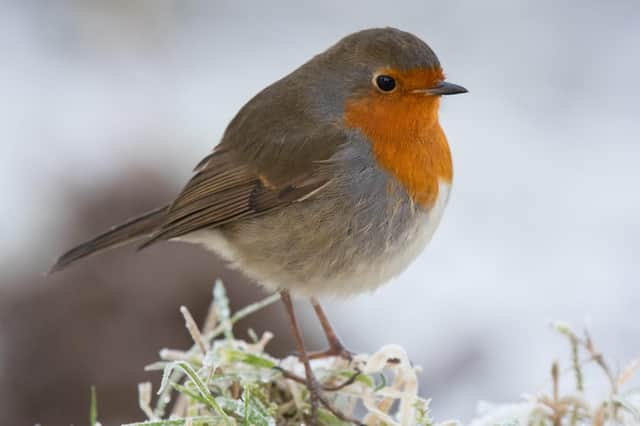NATURE NOTES: Time to connect with nature


With many of the usual festive traditions off-limits, taking a local walk to enjoy the nature on your doorstep is something we can all still enjoy.
Of course, Christmas is traditionally a time when nature comes into our homes.
Advertisement
Hide AdAdvertisement
Hide AdBringing the branches of evergreen plants, and more recently whole trees was seen as signs of optimism and hope at the darkest time of the year. Nowadays, Christmas trees are often plastic but if a real tree is brought in, it is likely to be a Spruce or Fir and is always an evergreen. Other evergreen plants such as Holly and Ivy are brought indoors to decorate the home at Christmas or hung as wreaths on the door.
Holly has been a Christmas decoration since Roman times, it has pagan connections, associated with the winter solstice and, with Ivy, was thought to ward-off evil spirits. Christians likened the prickly leaves to crown of thorns Jesus wore on the cross and the bright red berries symbolised drops of blood. Out in the hedgerows, Holly provides food for wintering thrushes like Blackbirds and Redwings and Ivy is a vital source of late nectar for insects.
The Robin Redbreast will adorn many a Christmas card on the mantelpiece of our homes this month. Robins have been associated with Christmas since the 1900’s when postman delivering cards were likened to our ‘national bird’ in their smart red uniforms. Of course, the Robin isn’t only here for Christmas, think back to the summer when Robin Redbreast was perched on your spade waiting for a tasty worm.
Robins are more numerous in winter when many thousands arrive, escaping the cold of continental Europe. Robins are one of the few birds that sing in winter, so keep an ear open for them on your walks this Christmas. Finally what about Partridges in Pear trees? Very unlikely I’m afraid as Partridges are ground-dwelling birds. We are lucky here in Northumberland that we can still see our ‘native’ Grey Partridge at all, they are a species in serious decline and have disappeared from many areas of England altogether. At this time of year, they form ‘coveys’ - small groups of maybe five up to 20 or more and remain secretive, on the ground, until they are ‘flushed’ into flight.
On behalf of the ‘Nature Notes’ team of Gwen, Stewart and myself, I would like to wish you a very merry Christmas and a nature-filled New Year.